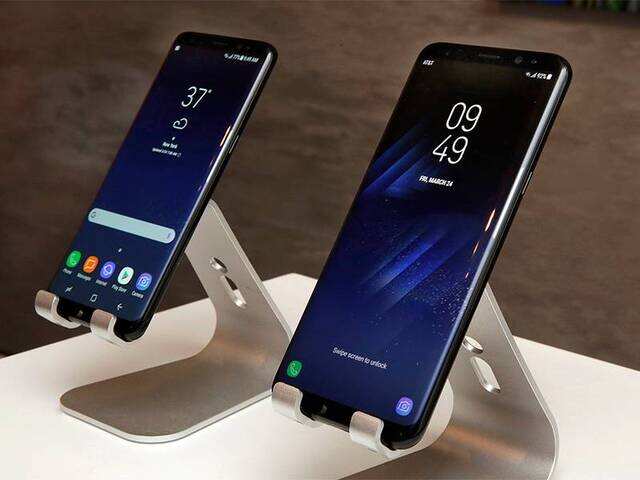With Android thoroughly dominating the mobile industry, picking the best Android smartphones is almost synonymous with choosing the best smartphones, period. While Android phones have few real opponents on other platforms, internal competition is incredibly fierce. From sleek devices that impress with premium design, to powerhouses brimming with features, to all-around great devices, and affordable phones that punch above their weight, the Android ecosystem is populated by a staggering variety of attractive phones. But which of them are the best smartphones of 2018?.
“Greatness” is subjective, and sometimes spec sheets and feature lists are not enough to make an idea of how good a phone really is. In this roundup, we’re looking at the absolute best — the Android phones of 2018 you can’t go wrong with.
- Google Pixel 2 and Pixel 2 XL
The Pixel 2 and Pixel 2 XL are Google’s latest and best flagship
smartphones, and they’re great at just about everything. They don’t have
as many bells or whistles as some of the other entries on this list,
but if you’re in the market for a simple Android phone, the Pixel 2 and 2
XL are great options.
The Pixel 2 and 2 XL have 5- and 6-inch OLED displays, front-facing
speakers, and top-of-the-line specs under the hood — a Qualcomm
Snapdragon 835 processor, 4GB of LPDDR4x RAM, as well as 64 or 128GB of
on board storage.
They also have two of the best Android smartphone cameras available. Not
only have these phones been named two of the best smartphone cameras on
the market according to DxOMark, we found the Pixel 2’s main camera to
be incredibly impressive in most situations. There’s even a portrait
mode on the front and back cameras, even though the phone doesn’t have a
dual-camera setup.
Despite the handful of issues with the Pixel 2 XL’s display, we’d still
happily recommend either phone to anyone looking for the best Android
phones of 2018 out there.
2. Samsung Galaxy S9 and S9 Plus

he Galaxy S9 is all about refinement. Design, display, photography, and
performance were all strong areas for the Galaxy S8 line, and the S9
does all of them better.
The biggest improvements in the Galaxy S9 have to do with the camera.
The S9 sports a single Dual Pixel 12MP autofocus sensor with OIS, along
with support for two apertures
at f/1.5 and f/2.4. This mechanical iris lens is able to switch between
apertures depending on the lighting conditions. If you need something
even more powerful, the Galaxy S9 comes with a dual-camera setup on the
back.
Samsung also included its own creepier version of Apple’s Animoji,
called AR Emoji, allowing you to make GIFs and send cartoony videos to
your friends.
These are new Samsung smartphone flagships, so it’s no surprise that
they feature the most top-of-the-line specs currently available. They
come with 5.8- and 6.2-inch Quad HD+ Super AMOLED displays, 4 and 6GB of
RAM, 64GB of storage, a 3.5mm headphone jack, and both are powered by
either the Exynos 9810 or Snapdragon 845 SoC depending on your region.
3. Huawei P20 Pro


Huawei’s new P20 and P20 Pro are finally here, and they’re both huge steps up from their predecessors. They are the best Android phones coming from China.
For starters, these are some of the most eye-catching devices we’ve see
so far. Both models are available in a few different colors, but the P20
Pro comes in a unique twilight edition that features a glossy
blue-to-purple gradient that changes tone depending on the lighting
condition. That’s not the only reason the P20 Pro will be a head-turner,
either. The higher-end model comes with three rear-facing cameras at
20, 8, and 40MP. The 20 and 40MP cameras do lack OIS, but Huawei says its AI-assisted stabilization will make up for users’ shaky hands.
These are Huawei’s first 2018 flagships, so both phones have some killer
under-the-hood specifications, too. The P20 comes with a 5.8-inch Full
HD+ LCD display, 4GB of RAM, and a 3,400mAh battery, while the P20 Pro
sports a 6.1-inch Full HD+ OLED display, 6GB of RAM, and a 4,000mAh
battery. Both devices are powered by Huawei’s Kirin 970 SoC, which can
also be found in the Mate 10 and Mate 10 Pro.
No, it’s not perfect, but no phone is. Samsung’s fingerprint sensor
placement on the Note 8 is still super annoying (luckily it’s been fixed
with the S9), and this phone is expensive. If those things don’t matter to you though, the Note 8 might be the right phone for you. Check out our full review below!
5.LG V30
The V30 is
the current flagship Android phone from LG, which has been struggling
to compete, at least in sales, with its biggest Android rival Samsung.
It is also the successor to 2016’s LG V20,
which included a secondary 2.1-inch screen on top for showing app
shortcuts, media controls, and more. The V30 does away with that
secondary display, and instead has one nearly bezel-free 6-inch screen,
using LG’s new Plastic OLED (pOLED) panel.
LG offers a slide-out menu on the phone’s display (called the Floating
Bar) that floats around the screen as a substitute (sort for) for folks
who might miss the secondary display.



Comments
Post a Comment